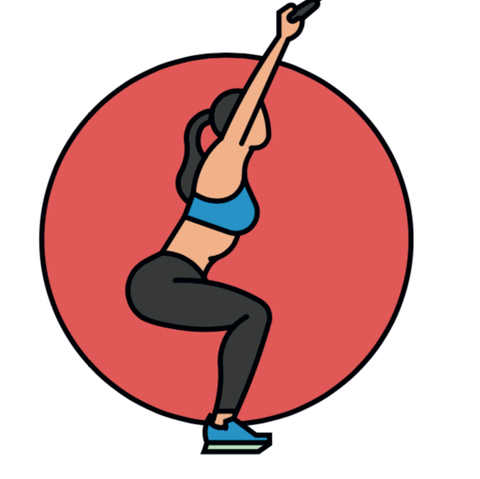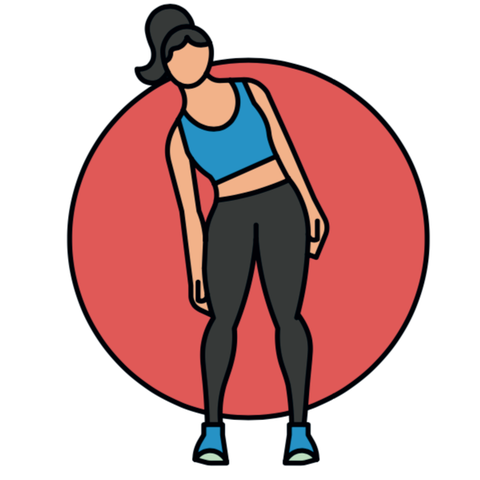The reasons why you’re picking up injuries, and how best to dodge them in the year to come.

Runners get injured. But it isn’t because you run – it’s the way you train or a lack of commitment to the important things that support your running.
There are two main types of injury – ‘acute’ and ‘chronic’. Acute are those where you can pinpoint when it occurred (eg ankle sprain). Chronic injuries build up over time and are far more common in runners, due to the repetitive nature of running, which amplifies initially minor problems. The good news is it’s easier to predict and to avoid chronic injuries.
Here, elite physio and author of Running Free of Injuries and The Runner’s Expert Guide to Stretching, Paul Hobrough gives us eight reasons you might be getting injured, and how you can stay injury-free in 2020:
1. Overload
Your body is great at adapting to the stresses, if those stresses are manageable. Things go wrong when it’s unable to cope with dramatic changes in mileage and/or intensity. You may have heard of the 10 per cent rule – not increasing your training by more than 10 percent each week. That metric is simple when you look at distance, but what about intensity? Use a heart-rate monitor to track your effort and/or look at your training programme to ensure you’re not adding too many high-intensity sessions – eg hill sprints – in the motivational excitement of the new year. Try one session at a time for an increase in intensity and work on a lower overall mileage in that period.
2. A lack of strength
If you’re a runner who just runs, you’re asking for some time on the physio’s table. Our bodies respond to load by making us stronger, and after your body adapts to a certain level of specific load from running, your strength will plateau. All maybe well until you do something different , such as a cross-country run or hill reps.
Strength and conditioning work that builds strength in both the prime movers and the accessory muscles (which help posture and control unwanted movement) means you are far less likely to overload these muscles and cause injury. And getting stronger will make you faster, too. The most effective strength moves for runners are single-leg squats, glute activation, calf raises off a step, deep-core activation and hamstring curls on a Swiss ball.
3. Reduced flexibility
Very few runners I know commit to stretching. The practice has come under scrutiny recently, with some studies failing to show any benefit. But my experience is that those who stretch, or practise yoga or Pilates, benefit from their long-term commitment. I’m such a believer in the benefits that I wrote a book, The Runner’s Expert Guide to Stretching, filled with self-tests to check your flexibility and exercises to improve it. Add a yoga or Pilates class to your weekly schedule and try to find time for these key stretches on a daily basis: hip flexor stretch, glute stretching pigeon pose and soleus stretch against wall (30-40 secs x 3).
4. Too little recovery
Spring marathon on the horizon? Runners accept feeling knackered after a session and going into the next one, so it can be tempting to think you need to suck it up and cram in the miles, but when you’re training hard, recovery is the most beneficial session of the week. Taking a well-earned day off or a slow and relatively short recovery run, should form the bedrock of any good training programme.
5. Back-to-back sessions
Following a particular type of training (eg a speed session) with another of the same type will overly fatigue specific muscles and energy systems, and leave you vulnerable to injury. Make sure your next session is of a different type to the last, so follow a hard speed session with a recovery run, not another speed session. Mix it up to help your body cope with different types of stress.
6. Fuel shortage
How we fuel our bodies is likely to be one of the leading reasons for injury. Starting sessions dehydrated and/or overfed but undernourished means your decision making is impaired, your muscle energy reduced and the likelihood of you making technical errors or simply overworking a struggling muscle group to the point of injury is increased.
Replenish your glycogen stores after heavy sessions so you’re restocked for the next time out. Try a generous helping of brown rice. Protein is key for repairing muscles; little and often is the key here, so, as a rule, each meal should include a protein source similar in size to a deck of cards. Also remember that being just five per cent dehydrated will impair performance, so keep an eye on your urine and make sure it’s a light-straw colour.
7. Muscle imbalances
This can refer to one muscle group being dominant over another (eg if the hamstrings are overused due to a lack of glute firing, this can lead to pain in the hamstring tendon). Or the imbalance could be between the left and right side of the body, leading to gait changes and potential overuse injuries on the weak side. Some work with a physio may be required, but for starters, check yourself for these imbalances:
Anteriorly rotated shoulders
Shoulders rolled forward is a curse of desk-bound lives. Do the IJWYT exercise (lie face down, arms at your side, then use your arms to make the shapes of those letters in order, holding each position for five secs) to improve posture.
Sway-back posture
Are you hanging off your hip flexors and appear from the waist up to be leaning backwards? If so, you need to train your deep core to develop strength and straighten up. Your running will improve, too.
Quadratus lumborum
(side flexor in your lower back) Bend to each side without leaning forward or back and see how far down your leg the hand slides. If one hand goes much lower than the other, you have an imbalance. Repeat the move to correct the imbalance.
8. Not rehabbing previous injury
The two biggest causes of injury I see in runners are previous injuries and increasing age. We can’t do much about the latter, but we can address the former. So many runners return to training before they have fully recovered. Everything ‘feels’ fine but without the specific treatments, exercises and time required to rehabilitate, that injury could well return within the first three runs, and then be even harder to recover from. So, listen to your physio.


